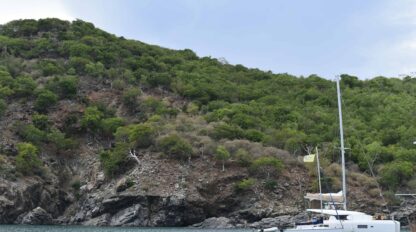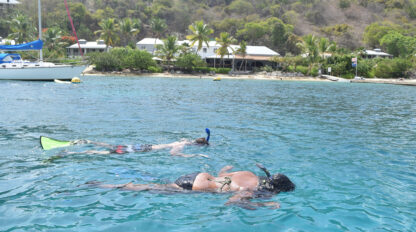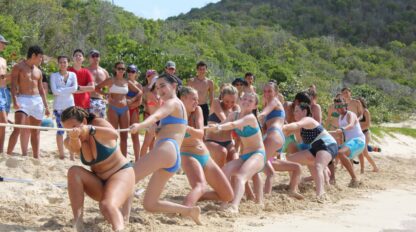Caribbean Sea Turtles
As far as summer adventures go, it doesn’t get much more exciting than a close encounter with a Caribbean sea turtle! There are several different species of marine turtles that call the BVI their home. So, whether you are participating in one of Sail Caribbean’s marine biology programs or just curious about the animals you see while earning your scuba certification, it’s fun to know how to tell them apart!
Sea Turtles of the British Virgin Islands
- Hawksbill

Sail Caribbean student divers saw this turtle on the reef – the pointy beak, “tortoise-shell” pattern, and serrated edge of the shell let you know this is definitely a Hawksbill. If you’re snorkeling or scuba diving on a coral reef and see a turtle, it’s most likely a hawksbill! These guys love to snack on sponges and you will seethem actively swimming over the reef looking for the tastiestbites. Sometimes at night you will even find sleepy hawksbills napping under ledges on the reef!
- Green

Sail Caribbean students captured this turtle and are preparing to measure, tag and release it. Notice the more uniform coloration, rounded head, smooth edge of the shell, lack of a notch in the shell above the tail, and the scutes (shell segments) don’t overlap. This turtle is definitely a Green! These guys are the vegetarians of the sea turtle world. You will usually find them happily grazing or napping in seagrass beds munching on Turtle Grass. Green sea turtles can grow to be the largest of the hard-shelled sea turtles – up to 5 ft (1.5 m) long and 700 lbs (317.5 kg) for the biggest ones! Don’t let the large size and lazy habits fool you – they are incredibly strong and very fast when they want to be.
- Leatherback
You thought the Green sea turtles got big? Leatherbacks are soft-shelled turtles and can grow to be a massive 7 ft (2 m) long and weigh up to 2,000 lbs (900 kg)! And all they eat are sea jellies (aka jellyfish). They are pelagic which means they live in the open ocean and only rarely come near shore. The ocean is a big place, so unless you are really lucky you probably won’t see one of these guys. It is possible, though – they come to BVI beaches to nest every year! - Loggerhead (???)
The BVI has the perfect habitat for Loggerheads and a few sightings have been claimed (including a sighting by a Sail Caribbean captain last summer!). However, no one has been able to prove they are here yet – so if you’re in the BVI and see an unusual turtle get your camera out fast! It is possible to see a Loggerhead on a reef (usually deeper water, but not necessarily). They like to sit pretty still on deeper reefs and eat crabs, lobsters, and small fish that get too close.
Characteristics to look for: Dome shaped shell; often appear to be more brown/orange/yellow in coloration; their head is very big in relation to body size (compared to greens/hawksbills).

Excited to learn more about sea turtles? Would you like to meet them face to face and earn some community service hours at the same time? Be sure to check out our Foxtrot adventure camp that specializes in environmental service projects, including monitoring BVI sea turtle populations!



